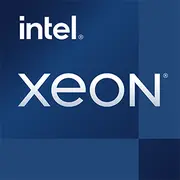Intel Xeon E-2176M

Intel Xeon E-2176M: プロフェッショナルのための力強さと信頼性 2025年
モバイルワークステーション向けプロセッサの分析と現代市場におけるその地位
アーキテクチャとプロセス技術: 14nm Coffee Lakeの安定性に重点
2018年に発売されたIntel Xeon E-2176Mプロセッサは、そのCoffee Lakeアーキテクチャと14nmプロセス技術により、専門的なノートパソコンにおいて依然として重要な選択肢です。2025年には5nmや3nmチップが主流ですが、Xeon E-2176MはECCメモリのサポートと長期間の信頼性が求められるワークステーションセグメントでの地位を維持しています。
コア数とスレッド数: 6コアと12スレッド、ベースクロック2.7GHz、ターボモード最大4.4GHz。レンダリングやシミュレーションなどのマルチスレッドタスクに対して、十分な性能を提供します。
統合グラフィックス: Intel UHD Graphics P630 — 基本的なタスクやプロフェッショナルアプリケーションに対応したソリューションです。DirectX 12、OpenGL 4.5、CADプログラム用API(例: SolidWorks)をサポートしており、エンジニアにとっては適していますが、ゲームや3Dモデリングには専用のグラフィックカードが必要です。
消費電力とTDP: パワーと熱のバランス
TDPは45Wで、高性能モバイルCPUクラスに属します。現代のプロセッサ(たとえば、TDP 28WのAMD Ryzen 7 7840U)と比較すると、Xeon E-2176Mは合理的な冷却システムを必要とします。
電力管理の特徴:
- P状態間の迅速な切り替えを可能にするSpeed Shift技術。
- 負荷時にクロックを一時的に上げるTurbo Boost 2.0モード。ただし、効果的な熱除去が必要です。
実際には、厚さ20mm未満のコンパクトな筐体ではプロセッサがスロットリングすることがあるため、大型クーラーを搭載したノートパソコンに使用されることが一般的です。
性能: 実際の使用シナリオ
オフィス作業とマルチメディア:
- Chromeで50以上のタブを開き、数百万行のExcelスプレッドシートを扱っても、プロセッサは遅延なく処理します。
- Premiere Proでの4Kビデオは8〜12分でレンダリングされ(Ryzen 9 7900HSの5〜7分に対して)、ECCメモリのおかげで安定性が向上します。
ゲーム:
- NVIDIA RTX 4060と組み合わせると、サイバーパンク2077は中設定(1080p、60 FPS)でプレイ可能。
- 専用グラフィックなしでは、古いプロジェクト(CS:GOなど)が低設定で100〜120 FPSで動作します。
ターボモード:
短期間の負荷(最大30秒)で4.4GHzに達しますが、長期的なストレス(具体的にはレンダリング)においては、過熱のため3.5〜3.8GHzまで下がります。
使用シナリオ: Xeon E-2176Mは誰のために設計されたのか?
1. エンジニアとデザイナー: ECCメモリのサポートにより、CADプログラムや科学計算でのエラーを防ぎます。
2. データアナリスト: マルチスレッド処理がPythonやRでの大規模データの処理を加速します。
3. プロゲーマー: 専用GPUとの組み合わせのみで有用です。
日常的なタスク(ウェブサーフィン、Netflix)には過剰な性能で、エネルギー効率の高いCore i5やRyzen 5の方が良い選択です。
バッテリー寿命: 性能への代償
Xeon E-2176M搭載のノートパソコンは、アクティブ使用時に4〜5時間以上動作することはまれ(例: AutoCAD使用時)。省エネルギー技術(C-States、動的周波数管理)は待機時にのみ役立ちます。
アドバイス: 90Wh以上のバッテリーを搭載したモデルを探してください。たとえば、Dell Precision 7530(2025年の価格は1800ドルから)は、ドキュメント操作で最大6時間の使用が可能です。
競合との比較: AMD、Apple、その他
- AMD Ryzen 7 PRO 6850H: 8コア、16スレッド、TDP 45W。マルチスレッドタスクで優れており(Cinebench R23で+15%)、ECCメモリは未搭載。
- Apple M3 Pro: 12コア、TDP 35W。エネルギー効率は30%向上していますが、Windowsプログラムとの互換性は制限されています。
- Intel Core i7-12800H: 同等の性能ですが、価格は200〜300ドル安いです。
Xeon E-2176Mは、ECCメモリとソフトウェア認証が重要なニッチシナリオでのみ優位性を発揮します。
長所と短所
強み:
- ECCメモリのサポート。
- 負荷時の高い安定性。
- プロフェッショナルソフトとの互換性(AutoCAD、MATLAB)。
弱み:
- 古い14nmプロセス技術。
- 高熱。
- 価格: ノートパソコンは1500ドルから(Ryzen搭載の類似品は1000〜1200ドル)。
ノートパソコン選びの推奨事項
1. デバイスの種類:
- ワークステーション: Dell Precision 7560、HP ZBook Fury 15 G8。
- ゲーミングノートパソコン: 専用グラフィックス搭載モデルのみ(MSI GP66 Leopard)。
2. 注目すべき点:
- 冷却システム: 最低2つのファンとヒートパイプ。
- RAM: ECC搭載の32GB DDR4。
- グラフィックス: 必ずNVIDIA RTX 3000/4000またはAMD Radeon Proを搭載。
結論: 2025年にXeon E-2176Mは誰に向いているのか?
このプロセッサは、信頼性が重要であり、ピーク性能よりも安定性が求められる人に最適です。具体的には:
- 出張中にCADを使用するエンジニア。
- フィールドでデータを処理する科学者。
- 長期間のサポートを求める企業ユーザー。
ECCメモリが優先事項でない場合は、最新のAMD Ryzen 7 PROやApple M3 Proを選択する方が良いでしょう。しかし、特定のプロフェッショナルなタスクに関しては、Xeon E-2176Mは依然として信頼できる作業馬として位置づけられていますが、最も高速な選択肢ではありません。
基本
CPUの仕様
メモリ仕様
GPUの仕様
その他
ベンチマーク
他のCPUとの比較
ソーシャルメディアで共有する
または当サイトへのリンクを追加
<a href="https://cputronic.com/ja/cpu/intel-xeon-e-2176m" target="_blank">Intel Xeon E-2176M</a>